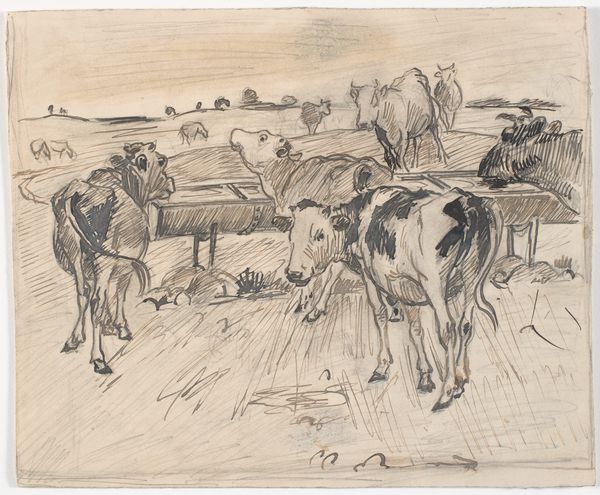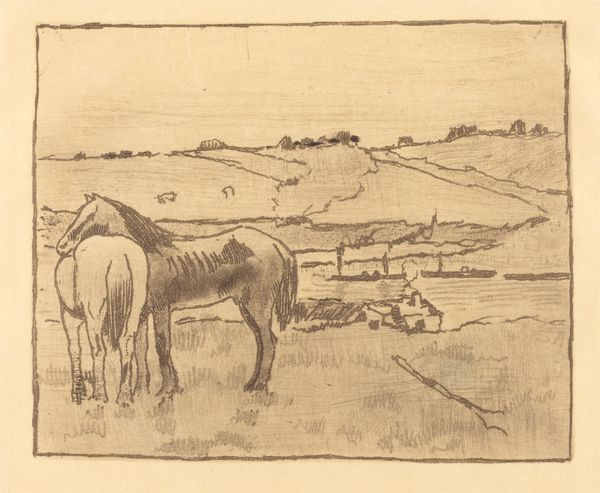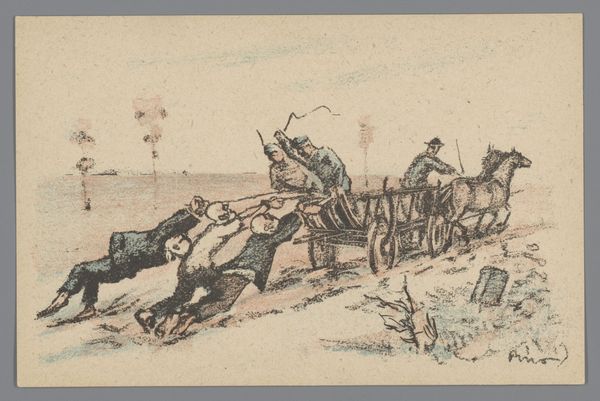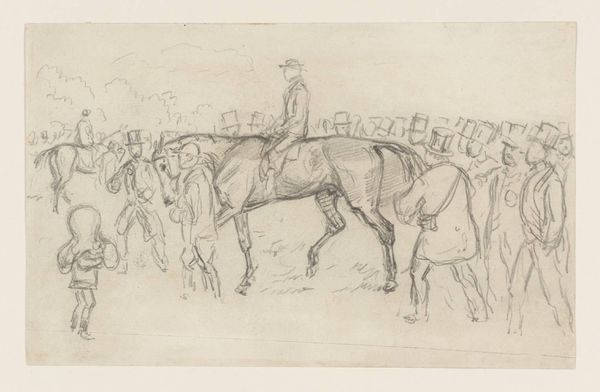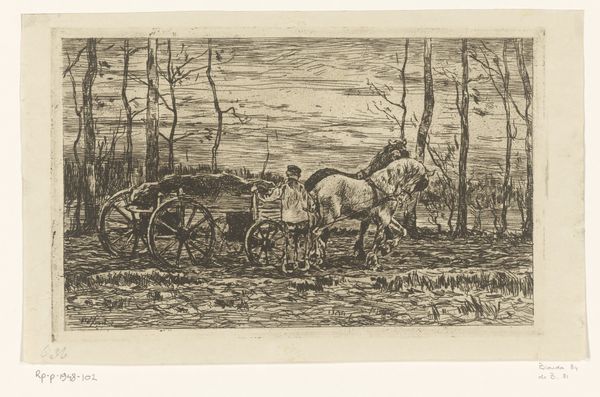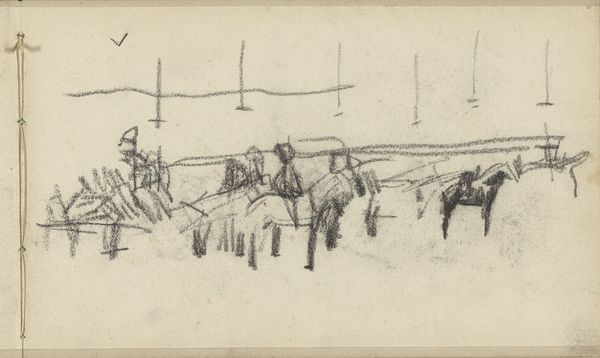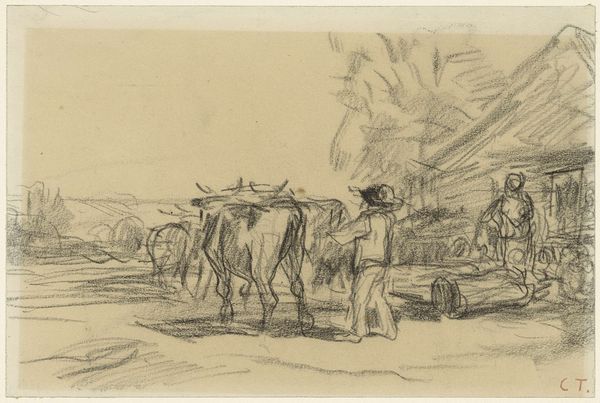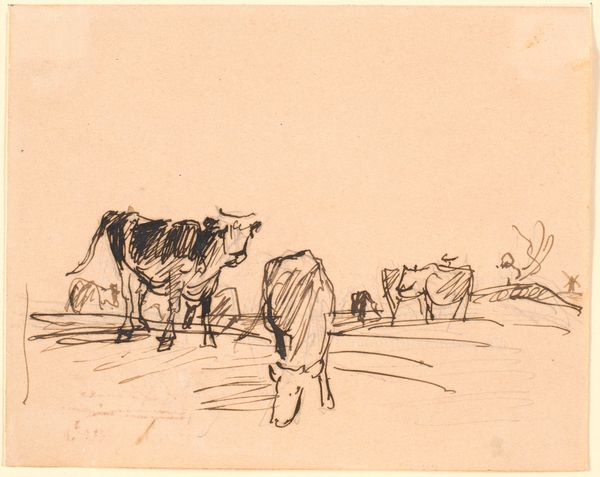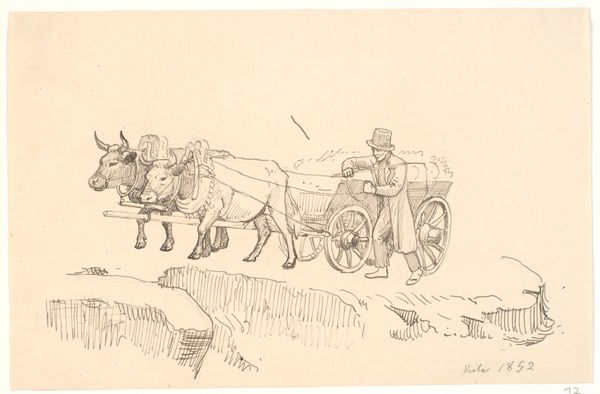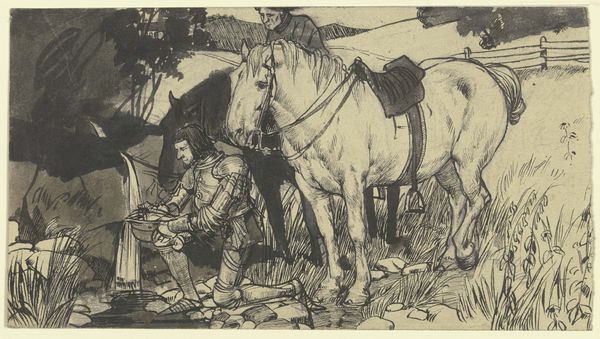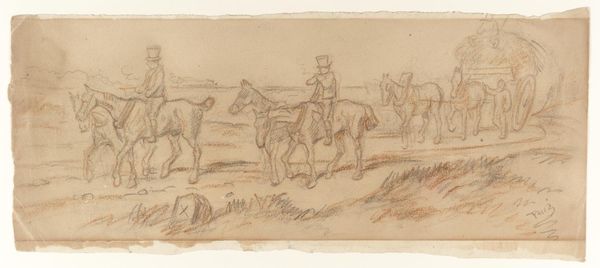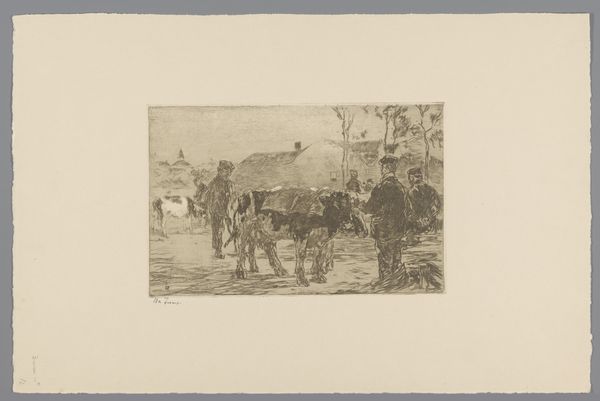
Toom van drie paarden voor een wagen op een hellend akkerland te Limburg 1871 - 1906
0:00
0:00
pieterdejosselindejong
Rijksmuseum
drawing, pencil
#
drawing
#
landscape
#
pencil
#
genre-painting
#
realism
Dimensions: height 294 mm, width 440 mm
Copyright: Rijks Museum: Open Domain
Editor: Here we have "Team of three horses pulling a wagon on a sloping field in Limburg," a pencil drawing made by Pieter de Josselin de Jong between 1871 and 1906. It has a rough, immediate feel that I really like. How would you interpret this work? Curator: What I see here is the weight of tradition and the enduring link between humanity and the land. Horses pulling a wagon is not simply a mode of transportation; it evokes centuries of agrarian life. It is an image carrying an almost archetypal significance – the cycle of labor, the turning of the seasons, the rural. Editor: I hadn't thought about it as evoking history, I was so focused on the sort of everyday aspect of it, but you're right. Are there any symbols that you see here that hint at these deeper ideas? Curator: Consider the position of the human figure, seemingly guiding the horses, almost subservient to their strength, it recalls our reliance on nature's power. This drawing resonates as an homage to a simpler way of life that was gradually fading during the Industrial Revolution, a poignant reminder of a cultural identity rooted in the earth. What emotions does this contrast evoke within you? Editor: I guess there's a subtle melancholy to it. It is like a visual record and a goodbye at the same time. It feels more significant now than it did before. Thanks! Curator: Precisely. Art, after all, preserves more than just images; it enshrines feeling, memory, and a cultural continuity which is critical to understand humanity's trajectory. A simple pencil drawing is a powerful mnemonic device!
Comments
No comments
Be the first to comment and join the conversation on the ultimate creative platform.
